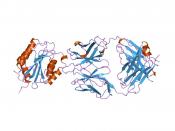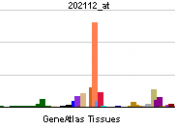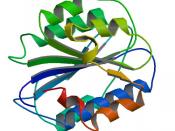I. Onset
The more severe forms of hemophilia become visible early in life. Newborns often show no signs of hemophilia unless the are circumcised . This causes extensive bleeding. If the infant is not circumcised, signs of hemophilia don't show until a child starts crawling or walking in which bruised markings appear were they have fallen or hit something. Hemophilia, in mild forms, may not show up later in life, until extensive bleeding occurs only after surgery, tooth extraction, or major injury to any body parts. The symptoms last all their lives.
II. Incidence
The incidence of hemophilia is about 1 in 7,500 live male births and 1 in 25,000,000 live female births. There are about 20,000 people living with hemophilia in the United States. Every year, about 400 babies are born with hemophilia. Though the disease has an x-linked inheritance pattern, as many as 1/3 of the people with hemophilia may have gotten it from a spontaneous mutation of the factor VIII clotting gene on their X-chromosome.
The full blown version of factor VIII deficiency is very rare in women, and would only result from having a father that is affected and a mother that is a carrier, or having two affected parents. Even though it is extremely uncommon for a woman to have full blown hemophilia, many women with carrier status experience mild to moderate symptoms throughout their lives, but much milder than their affected male counterparts who have a mutated clotting factor VIII gene and no normal gene to mask its effects. Hemophilia A, which is the most common and is also called classic hemophilia. Hemophilia B or Christmas disease, named after the first patient diagnosed and treated with hemophilia B. About 85% of hemophiliacs have classic or hemophilia A.
III. Diagnosis and Symptoms
If doctors suspect...



Very nice work!
This is amazing! I was particularly interested in the effects as most sites I visited didn't explain them with great detail. Unfortunately however, as previously stated in a different comment, had you cited your work it would have made it slightly better. Overall it was great though; thanks a lot!
1 out of 1 people found this comment useful.